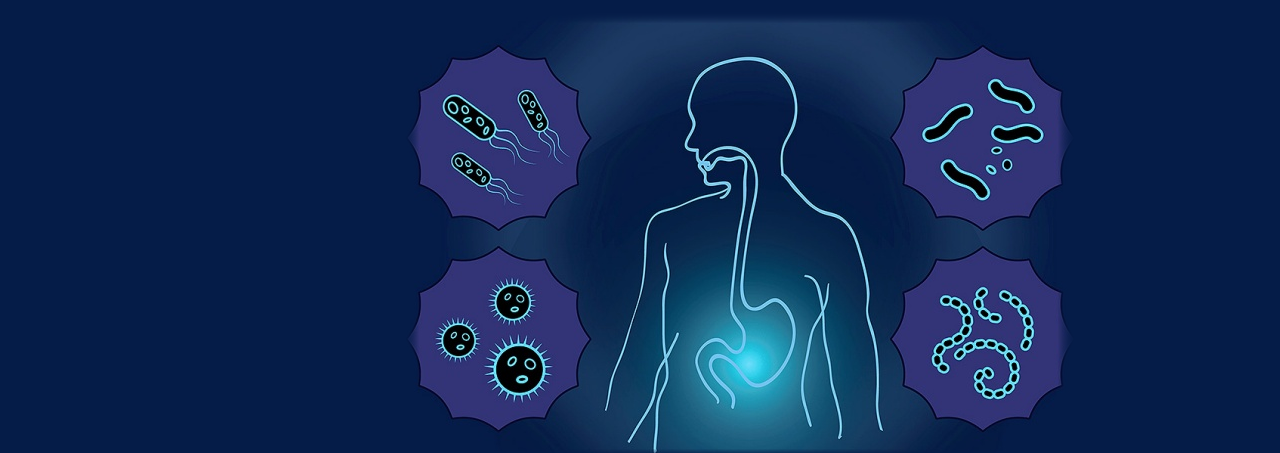UB’s microbiome hunters
Much like the Earth itself, our bodies teem with life that is not, strictly speaking, our own. Trillions of tiny organisms, including bacteria, fungi, viruses and other one-celled microbes invisible to the naked eye, reside in and on us in specialized communities. Together they form what’s called the microbiome—our body’s complete ecosystem of microorganisms.
Before the microbiome, our bodies’ genes were another great medical mystery to be solved. While scientists have mapped the human genome—the DNA-driven genetic material common to all of us—our microbes are another story. Their genes, as well as their overall structures, functions and interactions with each other, and with us, are still greatly unknown.
UB has long held a pioneering role in genomics—the study of genes and their DNA building blocks. In the 1990s, UB geneticists, including J. Craig Venter and Norma Nowak helped sequence and map the human body’s 23,000 genes in the landmark Human Genome Project. Encouraged by that achievement, in 2007 the National Institutes of Health launched the Human Microbiome Project (HMP) to study the genetic material of microbial communities found in 18 different sites within the body.
These are exciting times at UB as its work on the human genome and microbiome matures. Encouraged by better genetic sequencing technologies and increased funding from the federal government for personalized medicine, UB researchers are engaged in a wide range of multidisciplinary studies spanning the sciences, medicine, engineering and art.
The university is also is establishing a new Center for Microbiome Research, which will be directed by Robert J. Genco, DDS, PhD, SUNY Distinguished Professor in the Department of Oral Biology in the School of Dental Medicine. Genco, who also has appointments in the Department of Microbiology and Immunology, Jacobs School of Medicine and Biomedical Sciences at UB and the Department of Immunology at Roswell Park Cancer Institute, is an expert in the microbiome and a pioneer in the study of the impact that oral health has on overall health. He and his colleagues were among the first to report a connection between gum disease and heart disease and stroke, and led studies relating periodontitis to diabetes and obesity.
Genco is working with Jean Wactawski-Wende, dean of the School of Public Health and Health Professions, who is leading a five-year, $4 million study funded by the National Institute of Dental and Craniofacial Research to examine postmenopausal women and the possible connections between the communities of microbes living under their gums and the prevalence of gum disease.
Wactawski-Wende’s team is looking at the severity and progression of gum disease in a unique way. Unlike most microbiome studies to date, UB has access to an unprecedented amount of data from the Buffalo OsteoPerio study, one arm of a massive, nationally funded project called the Women’s Health Initiative (WHI). The larger WHI has tracked the lifestyle, diet and many other health-related factors of more than 162,000 postmenopausal women over the past 23 years.
Several teams of public health researchers, microbiologists and biostatisticians have joined forces to investigate bacteria’s role in health, and many are doing it with data from the WHI.
- Michael LaMonte, a UB epidemiologist and co-investigator on Wactawski-Wende’s periodontal study, began assessing a proposed study that would look at the gut microbiome’s role in cardiovascular disease in older women.
- Jo Freudenheim, a UB epidemiologist and breast cancer expert, just published data from another study ancillary to the WHI, indicating that there appears to be an increased risk of breast cancer in postmenopausal women who have periodontal disease (oral microbes have been found in cancerous tumors).
- Frank Scannapieco, chair of UB’s Department of Oral Biology, has been investigating connections between the oral microbiome and lung disease, while Genco has conducted and presented research on its associations with diabetes.
- Timothy Murphy, SUNY Distinguished Professor in the Jacobs School of Medicine and Biomedical Sciences, has been studying the bacterial species that are present—and periodically cause flare-ups—in people with chronic obstructive pulmonary disease, or COPD, which restricts the amount of air entering the lungs.
“We’re all talking and working together in ways we never have before,” says Genco. “Who knows what we’ll uncover?”
comments powered by Disqus


